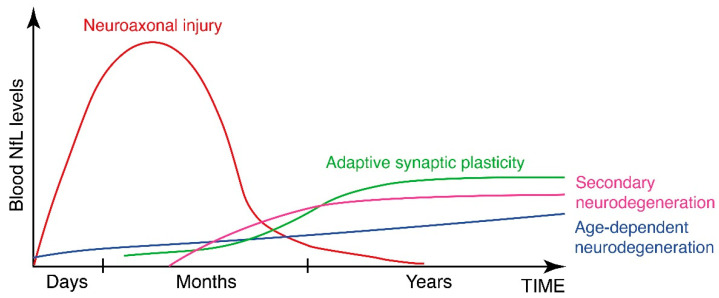Figure 3.
A model of the relative contribution of the different release mechanisms to the blood NfL levels after stroke and how they may change over time. After stroke, blood NfL levels reflect the release of NfL or NfL-derived peptides from injured axons, damaged synapses and age-dependent neurodegenerative processes as well as adaptive plasticity-related synaptic turnover. Whereas in the acute phase after stroke, the axons are the main source of blood NfL, synaptic turnover and secondary neurodegeneration are likely to be major contributors to blood NfL levels in the late phase after stroke.

